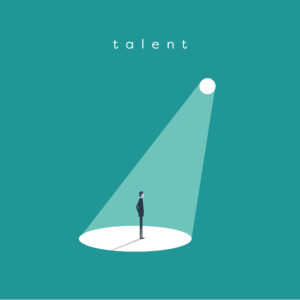
How AI Bolsters Job Recruiting with People Analytics

(Alexander Supertramp/Shutterstock)
As the economy rumbles along and the unemployment rate hovers near historic lows, it can be increasingly more difficult to find the right people for the right job. That’s why companies are turning to an emerging technique called “people analytics” to get a leg up.
The competition for top talent is fierce, particularly in industries that are undergoing rapid transformation. In the IT world, the challenge in finding experienced data scientists and data engineers is well documented. But the struggle to hire highly skilled workers extends to other industries, such as financial services, healthcare, and increasingly, manufacturing.
That’s where people analytics comes in. People analytics, or sometimes called talent analytics, is the process of collecting and processing data that helps predict whether or not a given person will be a good fit for a given job. Some have gone so far as to call people analytics a “crystal ball for HR.”
Whether or not it’s magic is debatable. But what’s clear is that many of the same advanced analytic techniques that companies are actively employing to better understand and serve their own customer base can also be used to boost hiring and retention of employees.
People analytics can help you:
- Identifying the features or variables in jobs and employees that matter most;
- Matching those important job variables with a pool of applicants or recruits;
- Predicting the likelihood of a worker to stay on the job for a long time or to “churn”;
- And recommending salaries and other compensation to bolster longevity.
Enormous Untapped Potential
One firm that’s invested consider in people analytics is PwC. For its Retention Analytics and Attribution Risk service, the company collects data from standard human resources information system (HRIS) and then cross-references it with other data about commute, performance, attendance, and hundreds of other variables. It then uses advanced statistical modeling to find hidden correlations that can help managers find top performers.
“[C]ompanies are beginning to recognize the enormous, untapped potential in what they already know, and what they could know, about their own people,” PwC says. “It’s called ‘people analytics,’ and it’s changing the way companies think about everything from attracting and developing talent to employee engagement and retaining talent.”
Having a data-driven hiring and retention approach can yield some impressive facts. Sometimes, the things that people think are indicative of a successful hire actually have little bearing on the matter.
For instance, one 2013 analysis conducted by Deloitte analyst Josh Bersin showed six factors were most highly correlated for success in sales. These include: no typos on resume; didn’t quit college; has experience selling real-estate or autos; success in prior jobs; ability to succeed with vague instruction; and experience planning time and multi-tasking.
Perhaps more interesting were the things that didn’t matter – which should probably be a wakeup call for hiring mangers. Bersin found that where somebody went to college, what grades they got, and who their references were didn’t really play much of a factor.
AI for Recruiters
A company called Entelo has taken people analytics a step farther with some cutting edge machine learning techniques that are helping recruiters and hiring managers identify and land top talent in very competitive fields.
The San Francisco firm has amassed a database of 450 million people, and it includes all the basic data that you’d expect: names, current employer, job history, education, etc. Much of this data can be gleaned from LinkedIn.
However, Entelo takes it a step further by gathering additional data that could be indicative of a successful hire. This data could be found in industry-specific repositories, such as GitHub or Stack Overflow, where software engineers share their work. All told, the company uses more than 50 data sources to keep its proprietary database accurate and up-to-date.
 “This is sort of the founding premise of the business, which is there are all these other bits of information about a candidate besides their profile and resume,” says Mike Trigg, Entelo’s chief marketing officer. “You look at resume, which shows you skills, education, years of experience. But it doesn’t really give you much insight into a bunch of other information that really might be the information that the recruiter cares about, which is, is this person gettable?”
“This is sort of the founding premise of the business, which is there are all these other bits of information about a candidate besides their profile and resume,” says Mike Trigg, Entelo’s chief marketing officer. “You look at resume, which shows you skills, education, years of experience. But it doesn’t really give you much insight into a bunch of other information that really might be the information that the recruiter cares about, which is, is this person gettable?”
Entelo has developed an algorithm that it calls MOLITOMO, or More Likely to Move, which shows the likelihood of a candidate leaving their current job. This employee attribute may not be desirable in situations where a company wants an employee to stay for a long time. But on the other hand, it could be desirable if you’re looking to attract a highly skilled engineer, doctor, machine operator, or financial analyst from your top competitor.
“Looking at company information and seeing geographical information and applying these statistical models to predict the candidates receptivity to a new job – those are really valuable to that recruiter,” Trigg tells Datanami. “That ‘more likely to move’ flag will come up on a candidate’s profile, and they can potentially prioritize those people first.”
ML Matchmaker
Today, Entelo announced the general availability of Entelo Envoy, a new offering that’s designed to automate many of the steps that recruiters and hiring managers perform manually today. Instead of poring over profiles of potential hires to match a worker with a job vacancy, the Entelo Envoy software automates the task of matching workers with the job, including optimizing the candidate outreach via email.
“Rather than the conventional outbound search process, where a recruiters searches by various attributes they might be looking for, Envoy flips that process on its head,” Trigg explains. “You basically upload your job description into Envoy and we parse out the skills and experience and look all our AI and machine learning technologies to determine who might be the best fit candidates for this role.”
Considering that recruiters can often charge commissions equal to 20% to 30% of a new-hire’s annual salary, this automation can quickly pay for itself, Trigg says.
While people analytics isn’t necessarily new, the trend is not as widespread as it could be. In 2015, Deloitte conducted a survey to see how many companies were using these techniques. Only 8% of those surveyed said their organization was “strong” in the area, which was unchanged from the year before. “Too few organizations are actively implementing people analytics capabilities to address complex business and talent needs,” Deloitte concluded.
Considering that those organizations that have developed capabilities in people analytics outperform their peers in terms of hiring, retention, and leadership capabilities, it’s a wonder why more haven’t adopted it.
Related Items:
Workforce Analytics: How Big Data Is Shaping the Labor Pool
Hiring with Hadoop: How Big Data is Helping HR
In Big Data, Jobs Search For You































